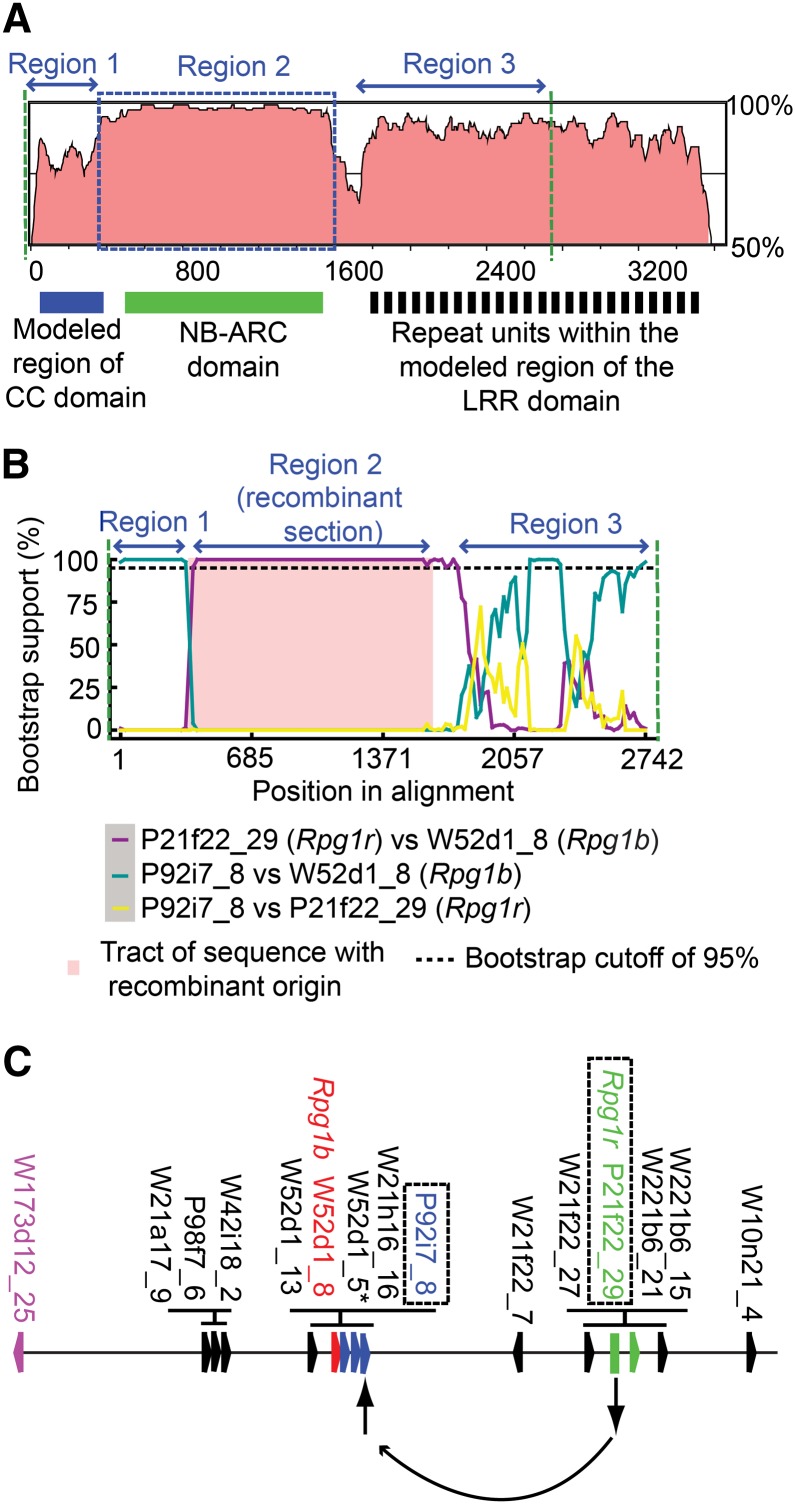Figure 4.
As a consequence of recombination, Rpg1r and Rpg1b share closely related NB-ARC domains but more divergent CC and LRR regions. A, Comparison of the nucleotide sequences of Rpg1r and Rpg1b. The Rpg1 sequences were compared using the VISTA program and a 100-nucleotide sliding window. The y axis shows the percentage nucleotide identity between the two genes, and the x axis shows the position in the Rpg1b open reading frame. The interval between the two dashed green lines corresponds to the region subsequently analyzed for evidence of recombination (as described in B). A region found to have a strong signal for recombination is indicated with a blue dashed box (corresponds to the pink shaded region in B). B, Evidence for a recombinant origin for the Rpg1b NB-ARC domain. Shown is output from the Bootscan program. The recombinant region in Rpg1b (region 2) completely encompasses the NB-ARC domain and is indicated by pink shading. C, Location of recombinant Rpg1b, and the predicted parental sequences, within the 1-Mb interval that contains the Rpg1 genes. The locations of CNL paralogs are indicated with colored polygons arranged on the horizontal line. The image shown represents a hypothetical ancestral chromosome that includes all the unique CNL loci represented in both cv Williams 82 and PI 986983. Rpg1b is shown in red, and a second paralog (W173d12_25) predicted to carry the same recombination event is shown in magenta. The two parental sequences, P92i7_8 and P21f22_29 (Rpg1r), predicted to have recombined to generate the ancestral Rpg1b locus are printed in blue and green, respectively.

